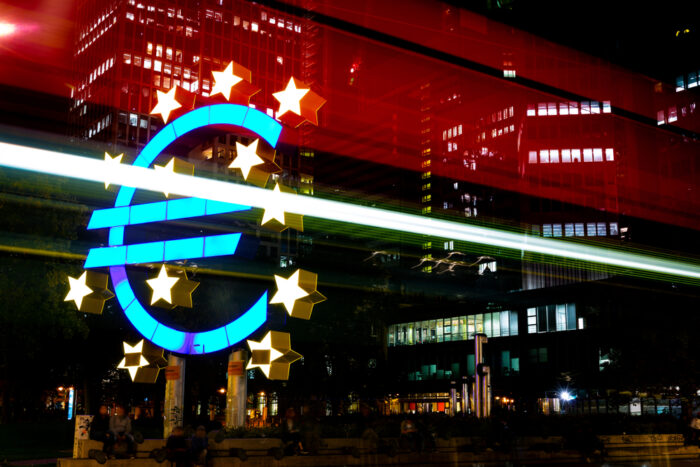The Progressive Post
Can we have a political debate on the Economic Union we want?
After several postponements, the European Commission put forward an orientation for a reform of the EU economic governance framework on 9 November. Now, hopefully, a real political discussion can take off.
Since the global financial crisis in 2007, the sovereign debt crisis, the migration and climate emergency and the emergence of the EU Green Deal, the global pandemic and the recovery process, and now the war, a lot of ink has been spilt by scholars, experts, think tankers, civil society and social partners to demand reforms of the European economic governance. However, the Commission moves on thin ice on this matter, as there is a wide political divide that no one wants to put under the spotlight, much less exacerbate.
On the one hand, it is overwhelmingly clear that the current fiscal framework is no longer fit for purpose and needs updating. On the other hand, member states are unhappy with the current framework for diverging reasons stemming from dissimilar views on the role of the state in the economy, on diverse national interests, and contrasting views on public debt and public investment.
Some member states lament that the present rules proved to be ineffective in curbing high levels of public debt and fostering structural reforms. Consequently, they demand more stringent enforcement and a clear give-and-take approach, linking fiscal and investment flexibility to success in reforms. Others member states lament that without immediate sizable public investment, it is impossible to maintain economic expansion towards environmentally and socially sustainable growth. They claim that some structural reforms can be attainable only with sizable investment, not least in sustainable infrastructure and administrative modernisation. In essence, the demand is for fiscal tools that are fit for the challenges ahead: either more scope for national fiscal measures or stronger European fiscal means. Better if a mix of both.
What is the new orientation of the EU commission?
Although the energy crisis and the war reinforce the arguments for a stronger economic push, the political landscape in Europe is still affected by the same mutual lack of trust among the EU member states that compromised the recovery after the global financial crisis and the eurozone crisis. It increasingly seems that the leap towards more unity which underpinned the swift adoption of the NextGenEU was only a temporary compromise for a temporary tool.
Amidst this complex political divide between member states, the European Commission’s communication represents an attempt to change the approach without revolutionising the fiscal framework. The Commission’s orientation goes in the direction of more leeway to member states in designing their fiscal trajectories and giving them ownership of a medium-term fiscal-structural plan. No word on more European fiscal tools or capacities, while there are steps to be taken in the direction of improving enforcement of fiscal rules, national commitments and public debt adjustments. There is something for both sides of the fence, as expected. One important point, though, made clear by the European Commissioner for Economy, Paolo Gentiloni, is that the current bias toward sub-optimal investment levels will be corrected. “Since fiscal adjustment was largely achieved by reducing investment, the composition of public finances was not growth-friendly”, he commented.
Among the major revisions that are proposed, there is the substitution of the annual structural balance approach with more mid-term planning focused on a country’s net expenditure. Each member state will set its own four-year fiscal path, including public investment commitments, debt adjustment paths and priority reforms. Some additional flexibility – three additional years – can be considered if conditions require a longer adjustment period. In essence, the 3 per cent deficit-to-GDP target remains, but it will be applied to medium-term fiscal plans, with a bit more room for public investment of a growth-enhancing nature.
Another important feature is the new approach to debt sustainability and the revision of the deficit-based excessive deficit procedure (EDP). It is recognised that the current debt reduction benchmark, the so-called 1/20th rule (under the Stability and Growth pact, member states are required to cap their debt at 60 per cent of GDP. If debt exceeds this level, countries must reduce the difference with the 60 per cent level by 1/20th annually, Ed.), is unrealistic and harmful, particularly for already weak economies or for highly indebted counties. Here as well, the 60 per cent debt-to-GDP target remains, but the surveillance framework will be based on a more country-specific risk assessment that can adjust the pace of debt reduction provided that its trend remains on a declining path. This, of course, is in exchange for more stringent enforcement, and financial and reputational sanctions, in case of deviation from the adjustment path.
A divisive camp that progressives have to unite
All in all, the Commission’s orientation consists of a balanced revision, simplification and actualisation of the EU framework for the planning and surveillance of the national fiscal policies. But nothing is proposed, yet, on the even more divisive issue of building a real European fiscal space.
Unfortunately, the political cleavage is not only visible across member states, where ‘the frugals’ oppose the Mediterranean periphery; strong differences also exist within the progressive family. However, the 2022 Party Congress Resolution approved in October in Berlin is rather ambitious and, on top of demanding a reform of the Stability and Growth Pact, it calls for “an Economic Union of shared prosperity, justice and cohesion”; an Economic Union that is able to underpin a Social and a Sustainable Union and equipped by a permanent long-term EU investment capacity with real European solidarity.
Indeed, if the progressive family truly aims at leading the next European legislature, it cannot afford to arrive at the next European elections without a common vision on the EU’s economic governance. We need to start a constructive high-level dialogue on which economic model we want for the Union. The functioning of the economic and fiscal framework is at the core of the Union: it underpins, de facto, all other fields in which progressives want to make a difference.
Many questions are still open to debate: how to better link the EU economic governance to the implementation of the EU Green Deal and European Strategic Autonomy? Can we agree that common borrowing will be needed even beyond the end of the NextGenEU in 2026, to lead the twin transitions? Besides revising the framework for national fiscal policy, what should be the management of the fiscal stance of the Euro area at the aggregate level? How to put a halt to the imbalances that are connatural to the current Euro area functioning? Can European countercyclical policies be included among the standard tools of the EU economic governance? And to look even further ahead: if we aim at becoming a real federal Union, why not planning to introduce real EU own resources to repay the EU debt, instead of relying only on national contributions? If the European Progressives can find a way forward on this, they may really be candidates to lead the next EU legislature.
Photo credits: Alexandros Michailidis/Shutterstock.com




